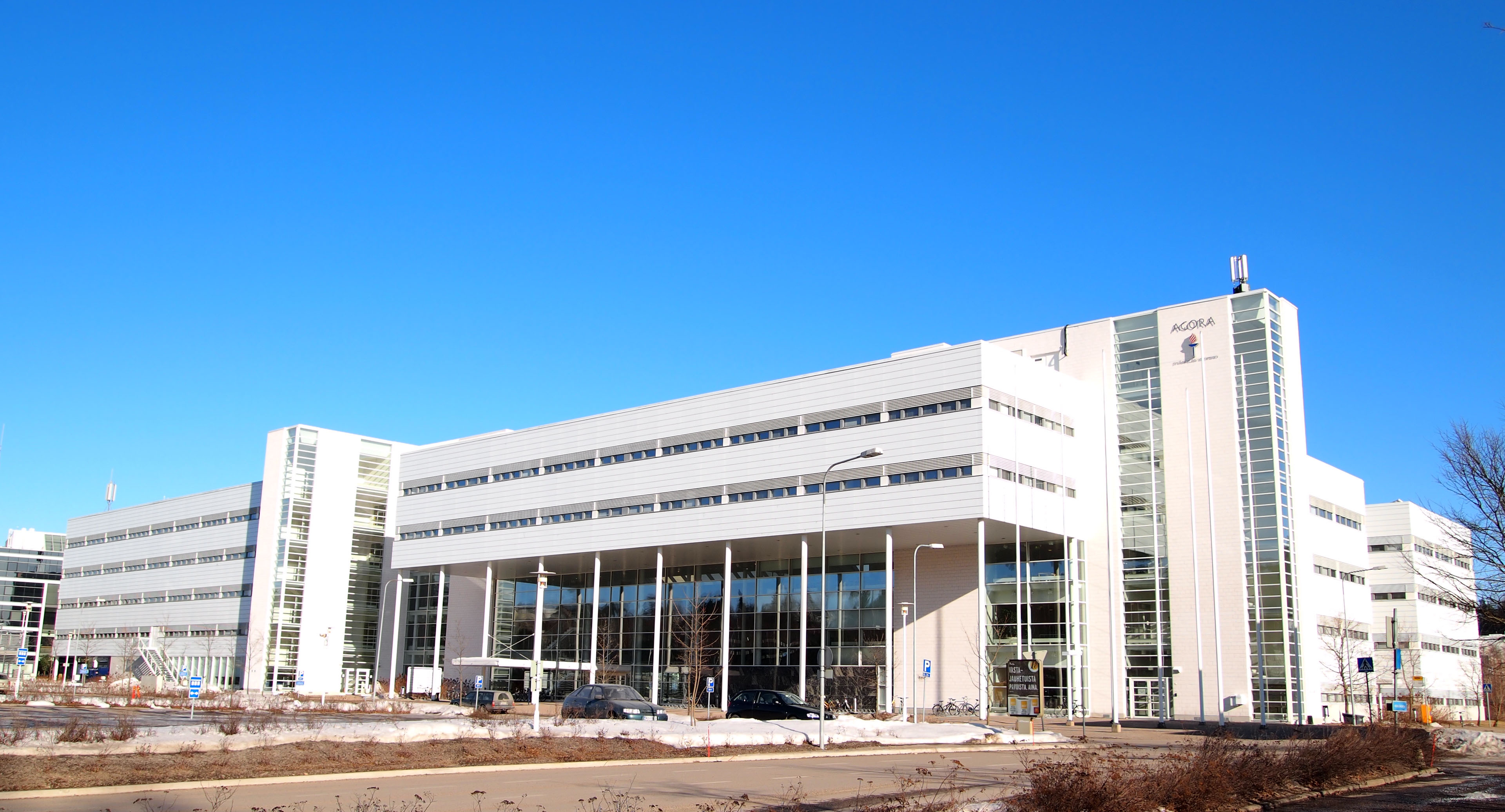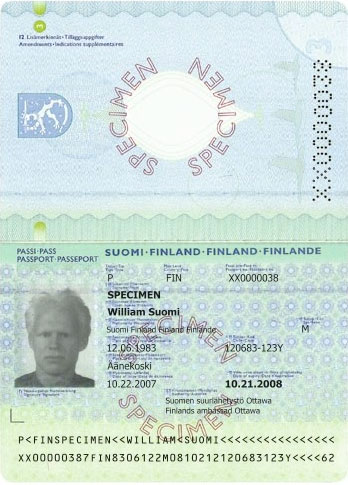|
YKI Test
YKI (Finnish: Yleinen Kielitutkinto Swedish: Allmän språkexamen English: National Certificate of Language Proficiency) is a certification in the Finnish language, Swedish language and Saami language issued by the University of Jyväskylä and sanctioned by the Finnish Ministry of Education, following a standardized exam comprising oral and written parts that match the Common European Framework of Reference for Languages (CEFR) requirements and proficiency levels. The YKI certification divides linguistic proficiency Language proficiency is the ability of an individual to use language with a level of accuracy that transfers meaning in production and comprehension. There is no singular definition of language proficiency: while certain groups limit its scope to ... into three broad levels: upper, middle, and lower. These can be further divided into six levels that match the CEFR classification system. Foreigners must pass the middle level certification in Finnish or Swedish ... [...More Info...] [...Related Items...] OR: [Wikipedia] [Google] [Baidu] |
Finnish Language
Finnish ( endonym: or ) is a Uralic language of the Finnic branch, spoken by the majority of the population in Finland and by ethnic Finns outside of Finland. Finnish is one of the two official languages of Finland (the other being Swedish). In Sweden, both Finnish and Meänkieli (which has significant mutual intelligibility with Finnish) are official minority languages. The Kven language, which like Meänkieli is mutually intelligible with Finnish, is spoken in the Norwegian county Troms og Finnmark by a minority group of Finnish descent. Finnish is typologically agglutinative and uses almost exclusively suffixal affixation. Nouns, adjectives, pronouns, numerals and verbs are inflected depending on their role in the sentence. Sentences are normally formed with subject–verb–object word order, although the extensive use of inflection allows them to be ordered differently. Word order variations are often reserved for differences in information structure. Finnish orth ... [...More Info...] [...Related Items...] OR: [Wikipedia] [Google] [Baidu] |
Swedish Language
Swedish ( ) is a North Germanic language spoken predominantly in Sweden and in parts of Finland. It has at least 10 million native speakers, the fourth most spoken Germanic language and the first among any other of its type in the Nordic countries overall. Swedish, like the other Nordic languages, is a descendant of Old Norse, the common language of the Germanic peoples living in Scandinavia during the Viking Era. It is largely mutually intelligible with Norwegian and Danish, although the degree of mutual intelligibility is largely dependent on the dialect and accent of the speaker. Written Norwegian and Danish are usually more easily understood by Swedish speakers than the spoken languages, due to the differences in tone, accent, and intonation. Standard Swedish, spoken by most Swedes, is the national language that evolved from the Central Swedish dialects in the 19th century and was well established by the beginning of the 20th century. While distinct regional varieties ... [...More Info...] [...Related Items...] OR: [Wikipedia] [Google] [Baidu] |
Saami Language
The Sporting Arms and Ammunition Manufacturers' Institute (SAAMI, pronounced "Sammy") is an association of American manufacturers of firearms, ammunition, and components. SAAMI is an accredited standards developer that publishes several American National Standards that provide safety, reliability, and interchangeability standards for commercial manufacturers of firearms, ammunition, and components. In addition, SAAMI publishes information on the safe and responsible transportation, storage, and use of those products. History The origins of SAAMI date back to World War I and the Society of American Manufacturers of Small Arms and Ammunition (SAMSAA). In 1913, the US War Department encouraged the firearms and ammunition industry to establish an organization to share new technology and establish common standards for small arms and ammunition. SAMSAA was officially formed in 1918, however became inactive by the early 1920s. By the mid-1920s the United States was still sufferin ... [...More Info...] [...Related Items...] OR: [Wikipedia] [Google] [Baidu] |
University Of Jyväskylä
The University of Jyväskylä ( fi, Jyväskylän yliopisto) is a research university in Jyväskylä, Finland. It has its origins in the first Finnish-speaking Teacher Training College (the so-called Teacher Seminary), founded in 1863. Around 14,000 students are currently enrolled in the degree programs of the university. History Founded in 1863, the university has its origins in the first Finnish-speaking teacher training college, the so-called Teacher Seminary. Uno Cygnaeus was enthusiastic to educate the people and created a programme for organising primary school education in Finland. Cygnaeus' plan was realised in 1863, when a teacher seminary was established in Jyväskylä, on the current university campus. Based on the town's central location, the first Finnish-medium secondary schools for boys and girls were also established in Jyväskylä. The foundation of the world-famous school system was created at the University of Jyväskylä. The teacher seminary evolved i ... [...More Info...] [...Related Items...] OR: [Wikipedia] [Google] [Baidu] |
Finnish Ministry Of Education
Finnish may refer to: * Something or someone from, or related to Finland * Culture of Finland * Finnish people or Finns, the primary ethnic group in Finland * Finnish language, the national language of the Finnish people * Finnish cuisine See also * Finish (other) * Finland (other) * Suomi (other) Suomi means ''Finland'' in Finnish. It may also refer to: *Finnish language * Suomi (surname) * Suomi, Minnesota, an unincorporated community * Suomi College, in Hancock, Michigan, now referred to as Finlandia University * Suomi Island, Western ... * {{disambiguation Language and nationality disambiguation pages ... [...More Info...] [...Related Items...] OR: [Wikipedia] [Google] [Baidu] |
Common European Framework Of Reference For Languages
The Common European Framework of Reference for Languages: Learning, Teaching, Assessment, abbreviated in English as CEFR or CEF or CEFRL, is a guideline used to describe achievements of learners of foreign languages across Europe and, increasingly, in other countries. The CEFR is also intended to make it easier for educational institutions and employers to evaluate the language qualifications of candidates for education admission or employment. Its main aim is to provide a method of learning, teaching, and assessing that applies to all languages in Europe. It was put together by the Council of Europe as the main part of the project "Language Learning for European Citizenship" between 1989 and 1996. In November 2001, a European Union Council Resolution recommended using the CEFR to set up systems of validation of language ability. The six reference levels (A1, A2, B1, B2, C1, C2) are becoming widely accepted as the European standard for grading an individual's language profici ... [...More Info...] [...Related Items...] OR: [Wikipedia] [Google] [Baidu] |
Linguistic Proficiency
Language proficiency is the ability of an individual to use language with a level of accuracy that transfers meaning in production and comprehension. There is no singular definition of language proficiency: while certain groups limit its scope to speaking ability, others extend it to cover both productive and receptive language skills and their effective application in varying practical contexts. However, this diversity has implications for its application in other language domains such as literacy, testing, endangered languages, language impairment, etc. There is little consistency as to how different organizations classify it. Native-level fluency is estimated to require a lexicon between 20,000 and 40,000 words, but basic conversational fluency might require as few as 3,000 words. Developing language proficiency Developing proficiency in any language begins with word learning. By the time they are 12 months old, children learn their first words and by the time they are 36 mont ... [...More Info...] [...Related Items...] OR: [Wikipedia] [Google] [Baidu] |
Finnish Citizenship
Citizenship of Finland can be obtained on the basis of birth, marriage of parents, adoption, or the place of birth. In addition, it may be acquired by application or by declaration to authorities. Finnish citizenship acquisition is based primarily on the legal principle of jus sanguinis. However, for many practical purposes, the concepts of municipal domicile and domicile in Finland are as important to the relation between the individual and the Finnish authorities as the individual's citizenship status. Birth A child acquires jus sanguinis Finnish citizenship at birth if: * the child's mother is a Finnish citizen, however although this is now the case it is not historically true as nationality depends upon the date of birth of the child and the law in place at the time. In 1984, the children of Finnish mothers were granted automatic citizenship; * the child's father is a Finnish citizen and the parents are married; * the child's father is a Finnish citizen, the child is born ... [...More Info...] [...Related Items...] OR: [Wikipedia] [Google] [Baidu] |



